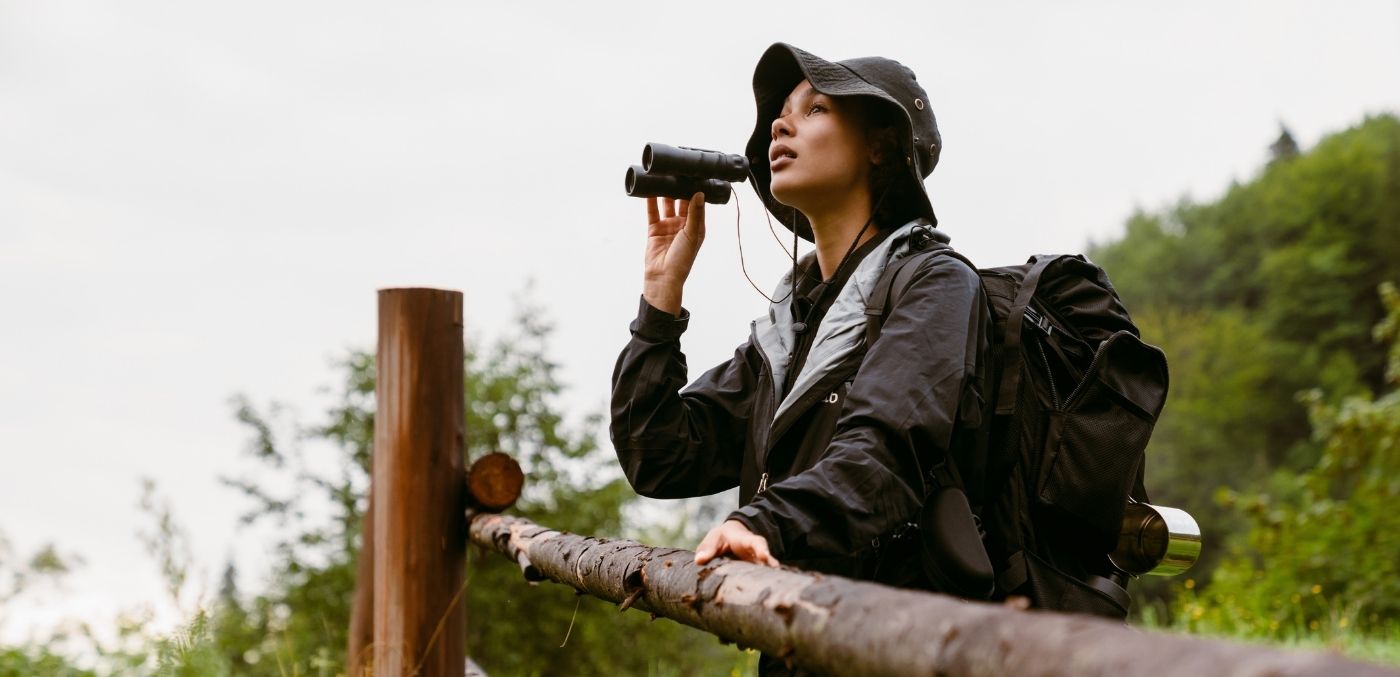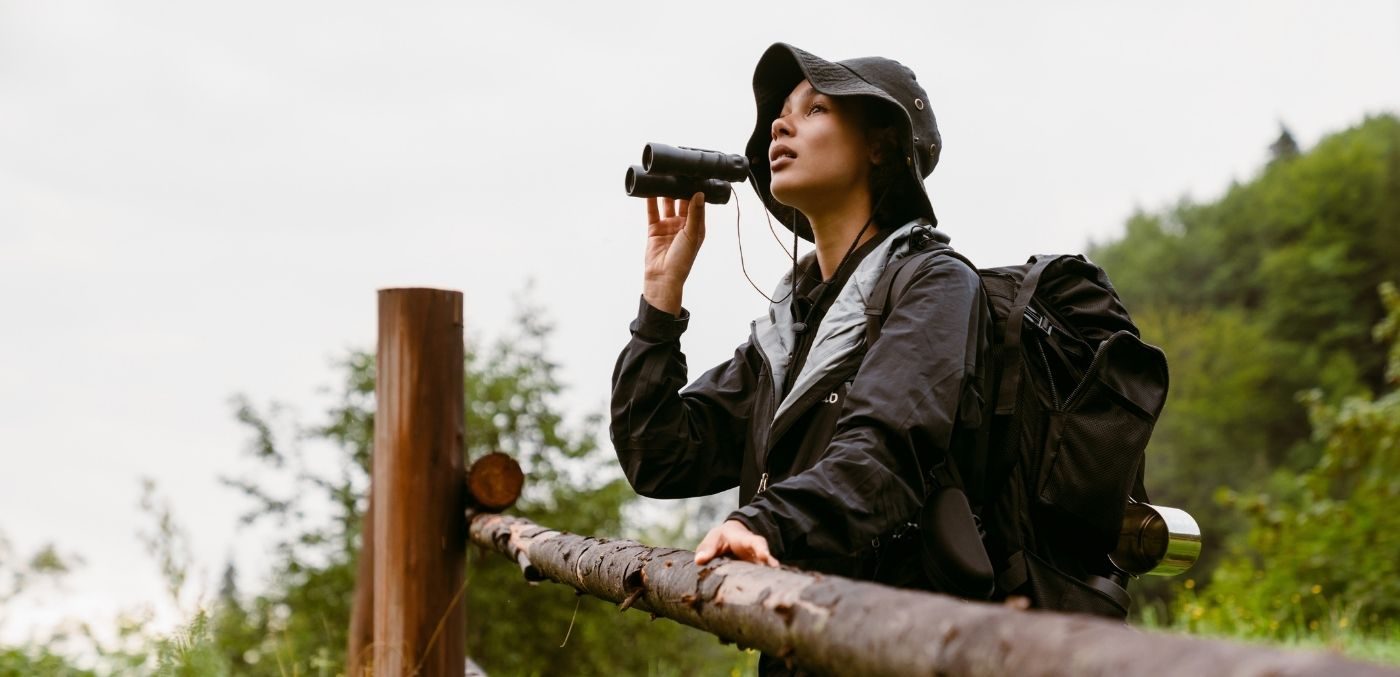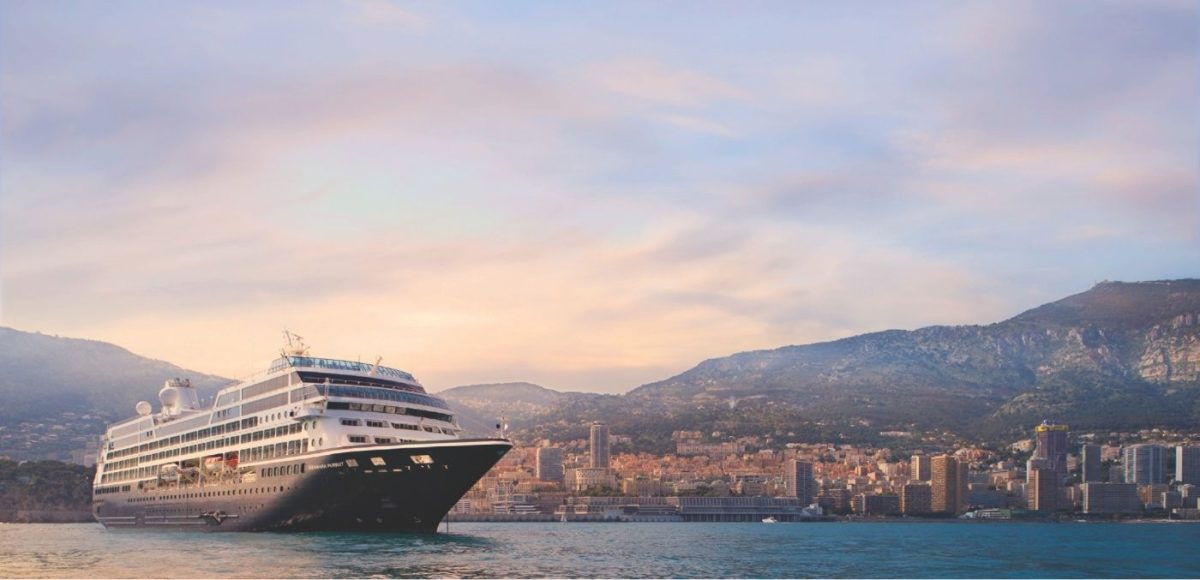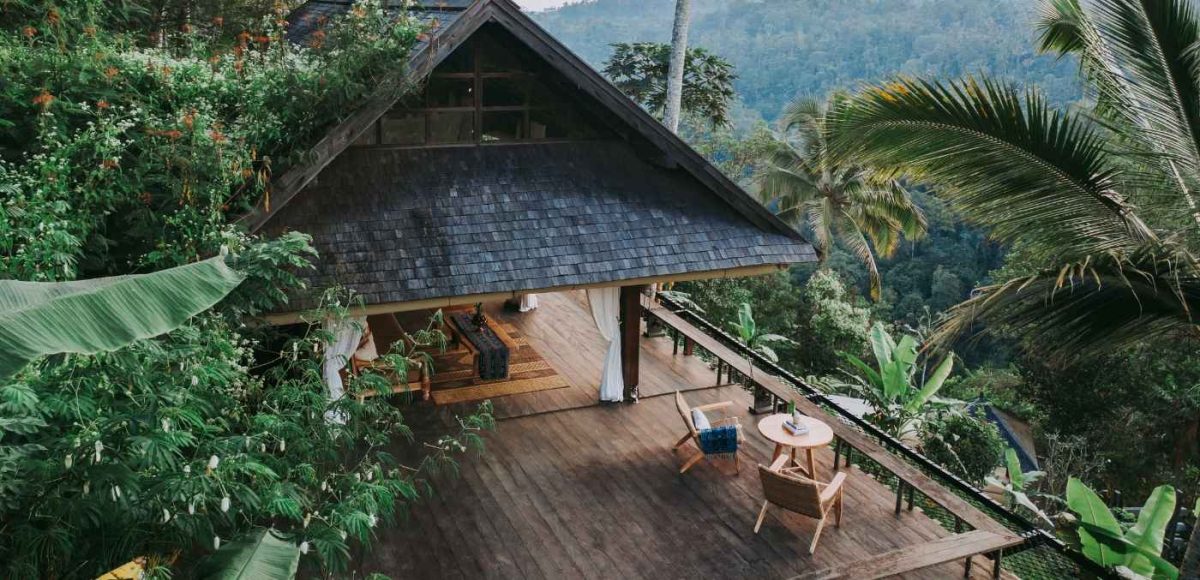From tours in the Daintree to adventures in South America, these are the best tours and destinations for birdwatching in Australia and beyond.
Once dismissed as a past-time for binocular-wielding retirees, birdwatching has now flown into the mainstream vernacular, capturing the imaginations of young twitchers, tech-savvy adventurers and social media audiences alike. Tiktok videos on the topic amass millions of views, while Facebook groups attract budding ornithologists and apps such as Merlin Bird ID, Birdly and Wingmate make spotting and tracking feathered friends easier than ever before. Birding is now a beloved recreation that allows people from all over the world to connect while engaging in an eco-friendly and sustainable activity that can contribute to ongoing conservation efforts or citizen science projects.
As twitchers venture further afield in search of rare and exotic species, the resurgence of birdwatching is leaving a noticeable mark on global travel and tourism. Across forests, wetlands and urban oases, more than three million excursions are now made each year purely to see birds, proving that what was once niche is now a global trend. With this in mind, we’ve scoured the globe to bring you the best tours and destinations for birdwatching in Australia and beyond, to get you started on your birding journey.

Best birdwatching locations in Australia
Kakadu National Park, Northern Territory
A vast wilderness of wetlands, billabongs and monsoon forests, Kakadu hosts more than 280 bird species, from the stately jabiru and the dancing brolga to clouds of magpie geese. Birdwatching in these ancient escarpments and tropical microhabitats can turn up treasures such as the white-throated grasswren and radiant gouldian inch. The best sighting conditions are in the dry season, between May and September.
Spotting:
Jabiru, brolga, black-necked stork, white-throated grasswren, gouldian finch, magpie goose, whistling kite, kingfisher, azure kingfisher, hooded parrot.
Western Australia
At Broome’s Roebuck Bay, low tide reveals mudflats frequented by thousands of shorebirds migrating from Siberia’s tundra. At the Broome Bird Observatory, birdwatchers can see red-collared lorikeets flash through the air and yellow chats hide among the saltbush. Farther south, the Abrolhos Islands teem with nesting seabirds, while Exmouth’s coastal plains are the domain of the wandering emu.
Spotting:
Roebuck Bay: great knot, bar-tailed godwit, eastern curlew, red-necked stint, grey-tailed tattler, whimbrel, terek sandpiper, red-capped plover, eastern reef egret, Australian pelican. Broome Bird Observatory: red-collared lorikeet, great bowerbird, rainbow bee-eater, yellow chat, white-breasted whistler, paperbark flycatcher, brahminy kite, osprey, white-bellied sea eagle, grey-headed honeyeater. Abrolhos Islands: lesser noddy, fairy tern, bridled tern, roseate tern, wedge-tailed shearwater, white-faced storm-petrel, Pacific gull, silver gull, eastern reef egret, osprey.
Daintree Rainforest, Queensland
Ancient rainforest gives way to the sea in the Daintree, which shelters more than half of Australia’s bird species in its emerald depths. Cassowaries stride beneath buttress roots, while kingfishers and riflebirds flit about in the canopy. Reports suggest Mossman Gorge, along the Daintree River or Cape Tribulation offer ornithologists the best perch for birdwatching. Visitors may glimpse rare endemics such as Macleay’s honeyeater or the ethereal lesser sooty owl. The canopy tower and aerial walkway near the interpretive centre also offers ornithophiles a good vantage point.
Spotting:
Southern Cassowary, Victoria’s riflebird, pied monarch, buff-breasted paradise-kingfisher, lesser sooty owl, spotted catbird.
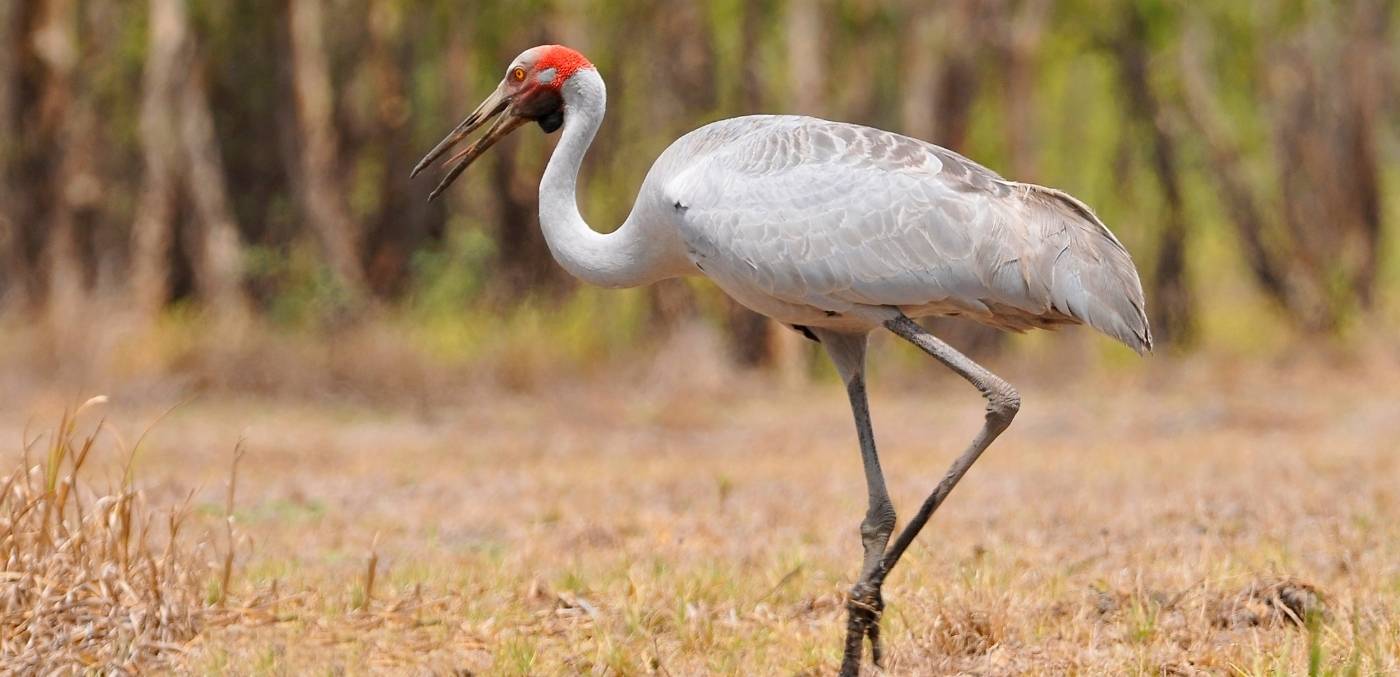
Kangaroo Island, South Australia
A sanctuary of rugged cliffs and tranquil lagoons, Kangaroo Island is home to more than 260 bird species, many of which are found nowhere else, making it one of Australia’s best locations for birdwatching. The rare glossy black cockatoo, whose last stronghold is here, can be seen among the casuarina groves. From Flinders Chase and Pelican Lagoon to the wetlands and American River, the island’s varied habitats brim with seabirds, raptors and songbirds.
Spotting:
Glossy black cockatoo, Southern emu-wren, shy heathwren, Western whipbird, honeyeaters, red wattlebird, striated pardalote, dusky moorhen, pipits, wagtails, firetails, darter.
Phillip Island, Victoria
Just a short journey from Melbourne, Phillip Island’s shores come alive each evening as little penguins waddle home from the sea. The island’s cliffs and dunes also welcome migratory shearwaters returning from distant oceans.
Spotting:
Little penguins, Cap Barren goose, kermadec petrel, Juan Fernandez petrel, bush stone-curlew, short-tailed shearwater, royal spoonbills, straw-necked ibis, rare hooded plover.
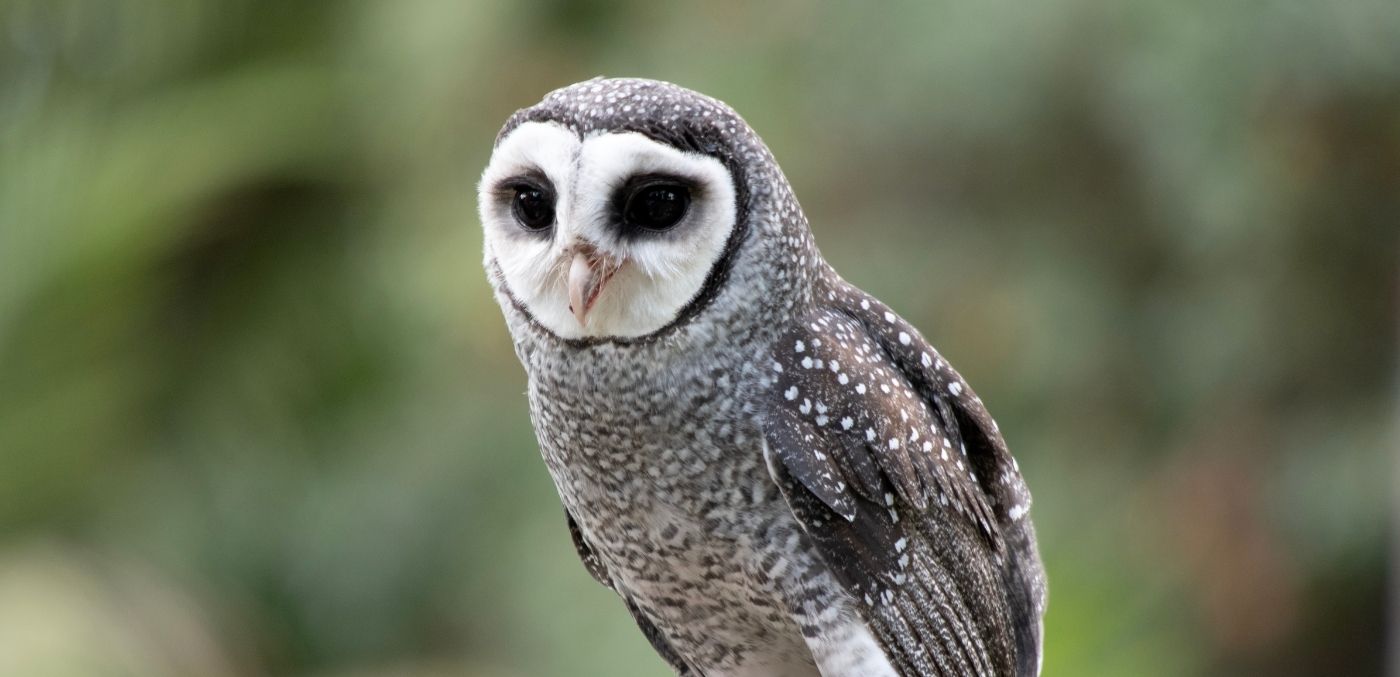
Bruny Island, Tasmania
At the bottom of Australia, across the D’Entrecasteaux Channel, lies Bruny Island, a sanctuary for all twelve of Tasmania’s endemic birds, including the bright green rosella and the rare forty-spotted pardalote. Between November and March, birdwatchers come in search of these island jewels, while conservationists work tirelessly to protect the fragile orange-bellied parrot colonies that breed in Tasmania’s wild south.
Spotting:
Swift parrot, forty-spotted pardalote, Tasmanian wedge-tailed eagle, orange-bellied parrot, shy albatross, little tern.
Lord Howe Island, New South Wales
Lord Howe Island is a dream for birdwatching. A haven for seabirds and songbirds alike, hundreds of thousands nest here each year, from masked boobies to providence petrels swirling above the cliffs. Amid the palms, the once-endangered Lord Howe Island Woodhen now thrives and is largely unafraid of humans.
Spotting:
Providence petrel, Lord Howe Island woodhen, Lord Howe currawong, Lord Howe white-eye, Hudsonian godwit, sanderling, flesh-footed shearwater, red-billed tropicbird, sooty tern, masked booby.
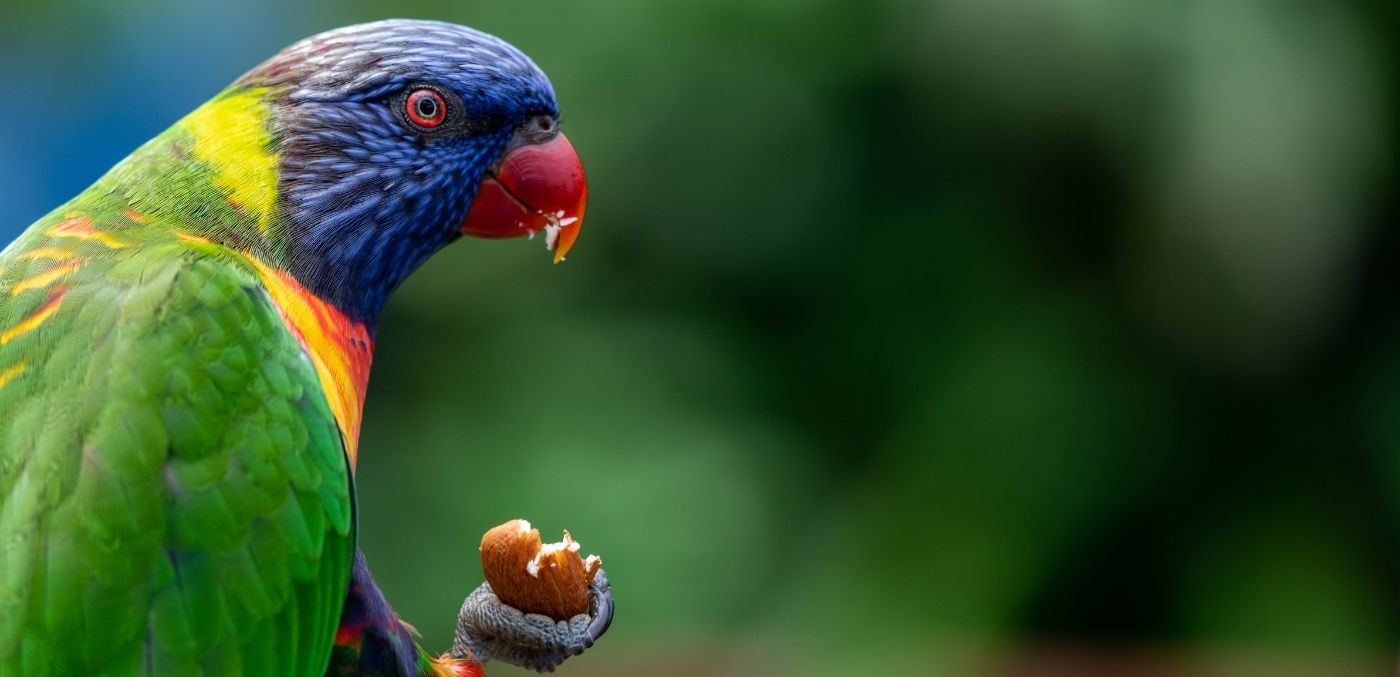
Gluepot Reserve, South Australia
In the heart of the Mallee, the once-barren paddocks of this former sheep station now pulse with life thanks to BirdLife Australia’s devoted volunteers. Nearly 200 species inhabit this semi-arid refuge, from the elusive mallee fowl to the delicate pink glow of Major Mitchell’s cockatoo. Amid the spinifex and saltbush, the chestnut quail-thrush and other dryland species can also be spotted at Gluepot Reserve.
Spotting:
Strided grasswren, red-lored whistler, mallee emu-wren, black-eared miner, scarlet-chested parrot, Australasian grebes, masked woodswallows, pink cockatoos, owlet-nightjars, chestnut quail-thrush, spiny-cheeked honeyeaters.
Michaelmas Cay, Queensland
This patch of sand in the Coral Sea is a flurry of sound and motion in the breeding season, when tens of thousands of seabirds circle the islet. Here, sooty terns, noddies and brown boobies form a whirling cloud above the turquoise shallows. Supporting around one percent of the world’s population of greater and crested terns, Michaelmas Cay is a vital sanctuary for Australia’s birdlife.
Spotting:
Sooty terns, crested terns, common noddies, ruddy turnstones, bridled terns, silver gulls, black-naped terns, brown boobies, great frigatebirds, black noddies, lesser frigatebird, masked booby.
Norfolk Island, Australia
Norfolk Island is a sanctuary for birdlife, with more than 25 rare and endemic species. The subtropical island offers one of the South Pacific’s most rewarding birdwatching experiences, from coastal cliffs to forested interiors. Conservation efforts have revived the Norfolk Island Green Parrot, once on the brink of extinction, and the Norfolk Island Morepork Owl, whose population dwindled to a single female in the 1980s but now numbers around two dozen in the wild thanks to careful reintroduction. Birds are most active from August to December, while migratory species arrive in October, making spring and summer ideal for both forest and coastal sightings.
Spotting:
Norfolk robin, Norfolk island gerygone, red-tailed tropicbird, wedge-tailed shearwater, crimson rosella, golden whistler, masked booby, white tern, white-faced heron, grey fantail.

Best birdwatching destinations around the world
Costa Rica
More than 900 bird species hide within the lush rainforests and misty cloud forests of Costa Rica. Birders can meet scarlet macaws at Carara National Park, or quetzals, motmots, toucans and hundreds of hummingbird species in other green pockets. There’s even decent birdwatching in the urban sprawl, with the gardens of San José hotels often visited by blue-grey tanagers, great kiskadees and crimson-fronted parakeets.
Spotting:
Resplendent quetzal, scarlet macaw, blue-grey tanager, great kiskadee, crimson-fronted parakeet, keel-billed toucan, violet-crowned hummingbird, collared aracari, white-necked jacobin, rufous-tailed hummingbird.
Pantanal, Brazil
A vast patchwork of flooded grasslands, savannas and forests, the Pantanal is the world’s largest tropical wetland. More than 600 bird species thrive here, including the hyacinth macaw and jabiru. Kingfishers dart over rivers, toucans call from the treetops, and rare species such as the southern screamer, agami heron and sunbittern can be spotted in the plains during seasonal floods.
Spotting:
Hyacinth Macaw, Jabiru, Toco Toucan, Southern Screamer, Agami Heron, Sunbittern, Blue-throated Piping-guan, Greater Rhea, Scarlet-headed Blackbird, Bare-faced Curassow.

Ecuador & Galápagos Islands
Ecuador is fantastic for birdwatching. Choose from the hummingbird-filled cloud forests of Tandayapa Valley and Mindo, the Amazonian Yasuni National Park or the Andean landscapes of Antisana. Elsewhere, the Galápagos Islands are home to 45 endemic bird species including blue-footed boobies, flightless cormorants, lava gulls and unique finches. Across these regions, rare treasures such as plate-billed mountain toucans, violet-tailed sylphs and masked trogons await those who seek them.
Spotting:
Blue-footed booby, flightless cormorant, plate-billed mountain toucan, violet-tailed sylph, royal sunangel, masked trogon, hoatzin, Galápagos mockingbird, crimson-backed tanager, Andean condor.
Kruger National Park, South Africa
Seeing the ‘Big 5’is usually the goal for people heading out on safari in South Africa, but Kruger National Park is also a mecca for birdwatching, with more than 500 species recorded across the park’s rivers, dams and diverse bushland. Majestic martial eagles, bateleurs and tawny eagles soar overhead, while white-backed vultures circle. Colourful species such as lilac-breasted rollers, bee-eaters, kingfishers, weavers and starlings can also be found throughout the savanna. Camps and waterholes provide the best vantage points for birdwatching, particularly in the late summer.
Spotting:
Martial Eagle, Bateleur Eagle, Tawny Eagle, White-backed Vulture, Lilac-breasted Roller, European Bee-eater, Malachite Kingfisher, Southern Red Bishop, Red-billed Buffalo Weaver, African Fish Eagle.

Colombia
Nearly 20% of the world’s birds can be found in Colombia. It’s unsurprising, really, given the country has more than 1900 bird species filling its trees. From the tropical rainforests of the Pacific coast and the Amazon to the Sierra Nevada mountains and wetlands near Bogotá, colourful hummingbirds, tanagers and flycatchers abound. Endemic and rare species are best found on guided tours, many of which contribute to conservation and citizen science, allowing birders to support local communities while enjoying their holiday. Time your visit for one of the two driest periods, from January to March and from June to mid-September, to maximise your sightings.
Spotting:
Fuertes’s parrot, dusky starfrontlet, cerulean warbler, blue-knobbed curassow, sooty ant-tanager, beautiful woodpecker, sparkling violetear, golden-headed quetzal, masked trogon, white-tipped swift.
Borneo, Malaysia
Hornbills, pittas and sunbirds share the forest with orangutans in Borneo. The world’s third-largest island and largest in Asia, Borneo’s tropical rainforests are a treasure trove of birdlife, from lowland rivers to montane slopes. Of the 600-plus species roaming the island, endemic birds such as the Bornean bristlehead and rhinoceros hornbill should be at the top of every birder’s wishlist. Key sites include Mount Kinabalu Park for montane species, Danum Valley for lush lowland rainforest, and the Kinabatangan River for riverine birds. However, birdwatching facilities like lodges and guided tours are better developed in Sabah than in Sarawak.
Spotting:
Bornean bristlehead, rhinoceros hornbill, Bornean banded pitta, Bornean green magpie, black-and-yellow broadbill, helmeted hornbill, blue-headed pitta, green broadbill, ferruginous babbler, giant pitta.
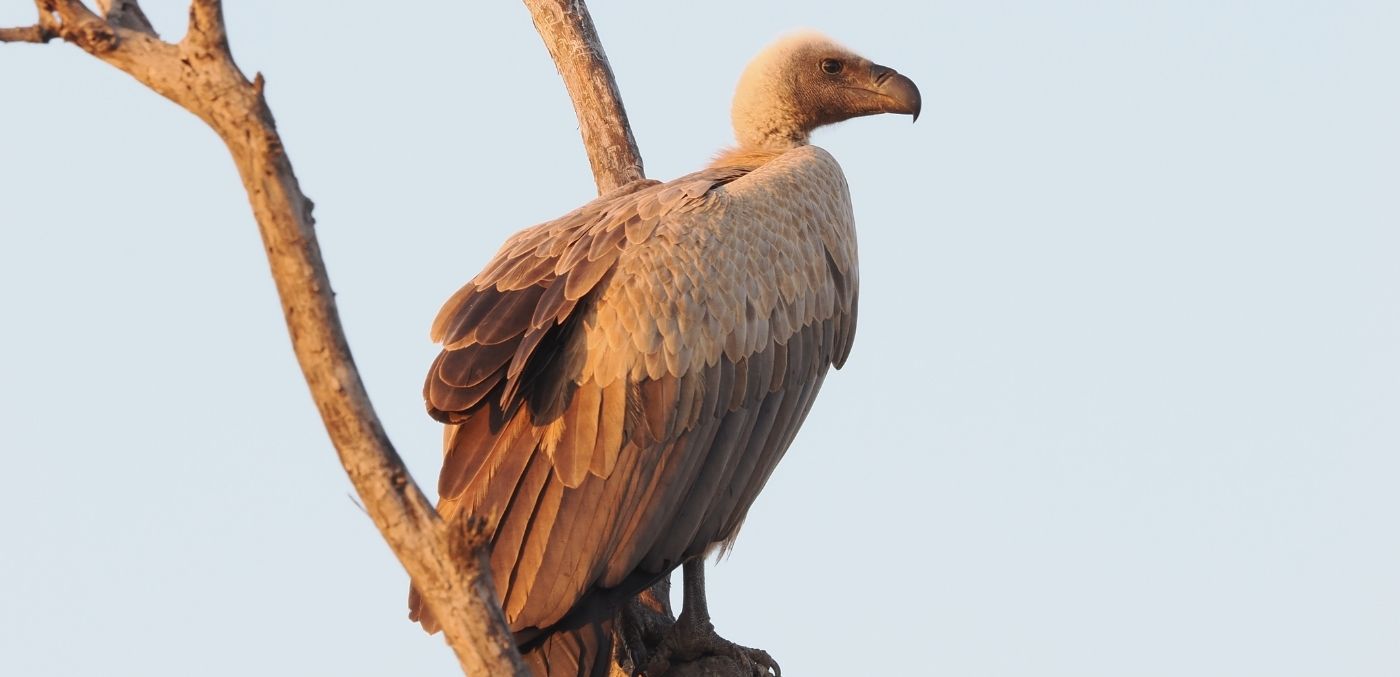
Alaska, USA
With nearly 500 species spread across its coastal, boreal and tundra habitats, Alaska is a spectacular destination for birdwatching. Summer months from May to September are ideal, as migratory shorebirds arrive and raptors soar over the mountains. Along the cliffs and coasts, seabirds such as puffins, murres, auklets and kittiwakes nest in dense colonies, while songbirds and waterfowl fill forests, rivers and wetlands. Top sites include Glacier Bay, Kenai Fjords, the Pribilof Islands, Denali and Kodiak Island.
Spotting:
Puffin, bald eagle, gyrfalcon, steller’s jay, spectacled eider, trumpeter swan, Arctic tern, willow ptarmigan, spruce grouse, common loon.
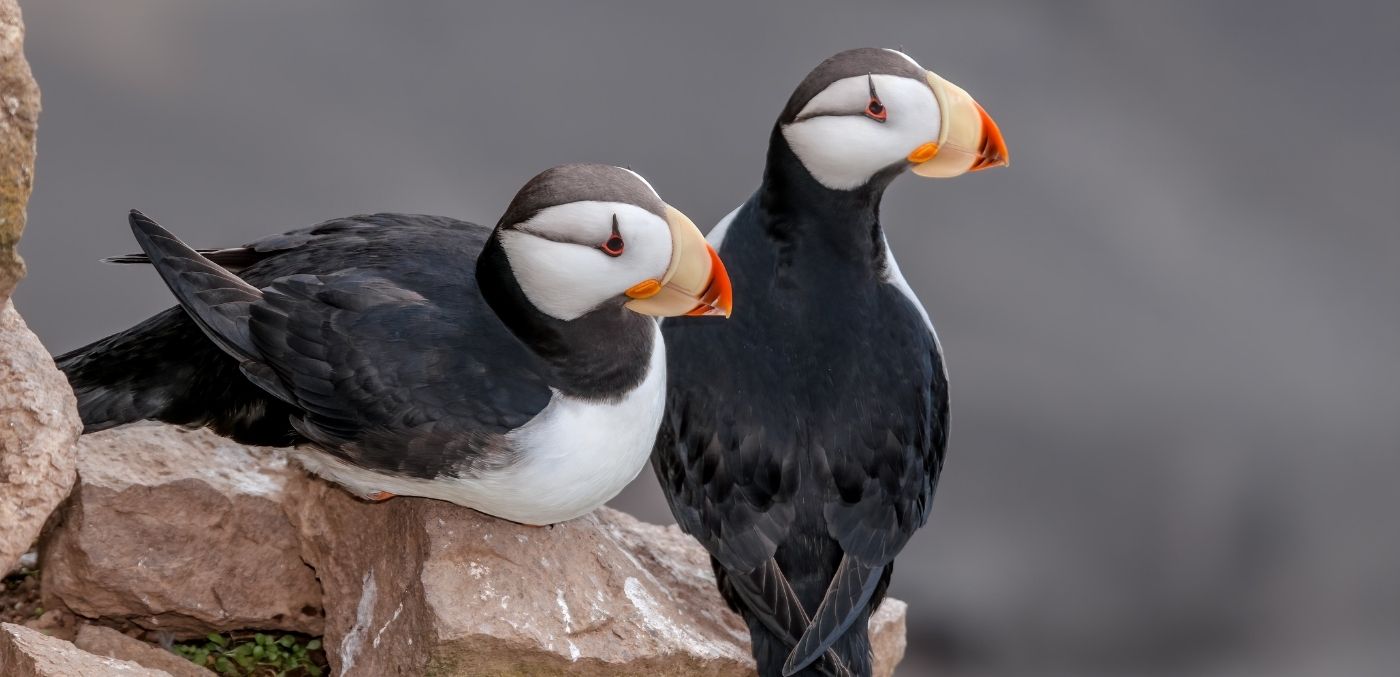
Birdwatching tours in Australia
Australian Geographic has a curated selection of birdwatching tours all around Australia, including Endemic Birds of Tasmania, Mallee & Outback Birds of Victoria and Mungo, North Queensland Tropical Birding, Cape York Birding Safari, Birdwatching Safari of Kakadu & Litchfield National Park, and Gluepot Reserve & Bowra Sanctuary Birding Safari.
Far North Queensland Nature Tours host day-long or multi-day birdwatching tours to areas such as the Daintree, Cape Tribulation, Atherton Tablelands, Julatten and Mount Lewis and Mareeba Savannah.
Join an Exceptional Kangaroo Island: Wild About Birds three-day tour and discover more than 250 species of birds while joining marine tours to swim with dolphins, private visits to Australian sea-lion and fur-seal colonies, guided explorations of Flinders Chase National Park and Remarkable Rocks, hidden beaches, and daily elegant al fresco lunches and homemade treats.
Join a three-day, two-night birdwatching tour of the Southern Eyre Peninsula with Australian Coastal Safaris. Find more than 270 species throughout wetlands, coastal bays, mallee scrub and wilderness regions, with the possibility of meeting furred and scaled friends such as kangaroos, koalas and goannas along the way.
Join an eight-day, seven-night Christmas Island birdwatching tour with Australian Wildlife Journeys to see its world-famous seabird rookery of 80,000 nesting birds, snorkel over pristine coral reefs teeming with tropical fish, and explore the island’s deserted beaches, caves, and unique geological features.
Birdwatching tours with Longreach Birding Tours introduce guests to the 200 bird species inhabiting the Mitchell Grass Plains, with some tours offering exclusive access to private properties for spotting rare birds and learning about life on working farms.
Explore the Noosa Everglades, home to nearly half of Australia’s native bird species, on day tours with Everglades Eco Safaris, where you can spot pelicans, eagles, osprey, and rare birds while gliding through its serene, biodiverse waterways on a canoe or cruise.
Bruny Island is home to all 12 of Tasmania’s endemic bird species and designated an Important Bird Area. Inala Nature Tours will take guests to spot rare birds like the forty-spotted pardalote and swift parrot amid protected forests, with the biennial Bruny Island Bird Festival in March is a must-not-miss event for twitchers.
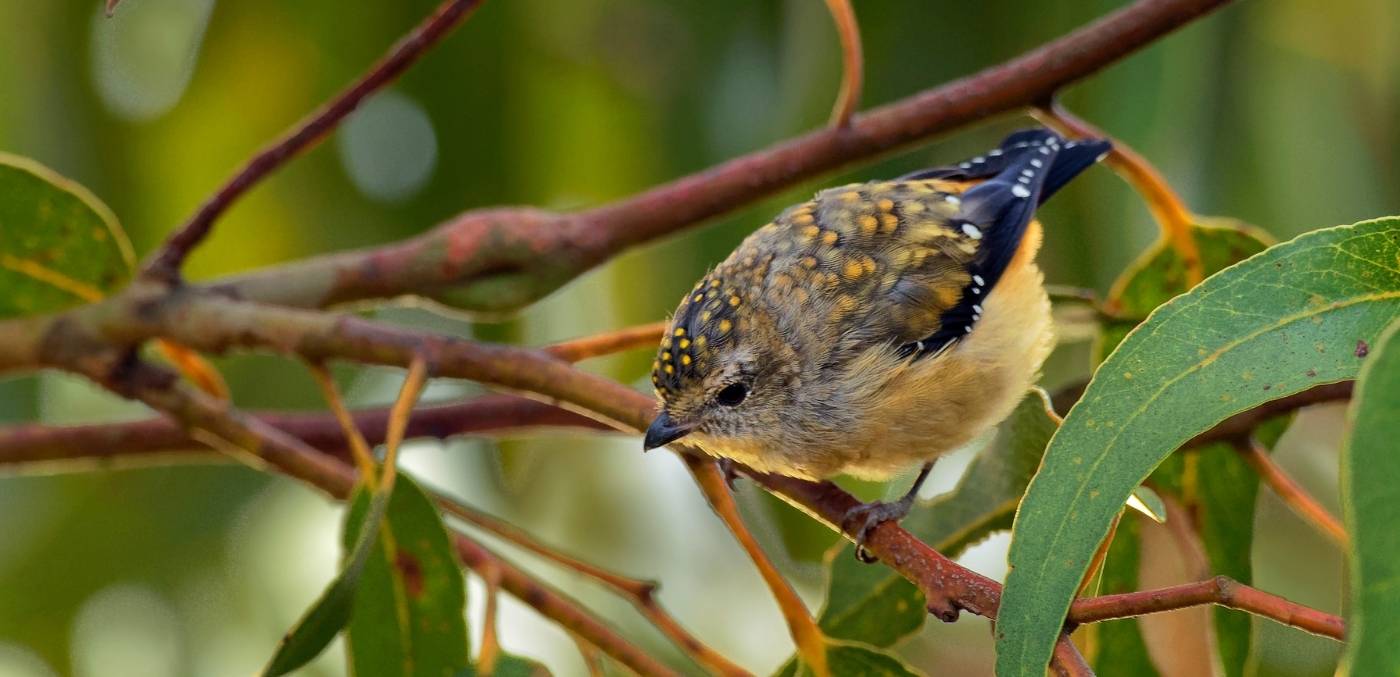
Luxury lodges with birdwatching experiences
Luxury Lodges of Australia hosts birdwatching and photography tours at several properties, including those in the Daintree, Kimberley, Lord Howe Island, Bullo River Station, Tasmania, and The Red Centre.
Silky Oaks Lodge in Queensland offers full- and half-day birdwatching tours led by Doug Herrington of Birdwatching Tropical Australia, exploring diverse habitats ranging from sandy beaches and mangrove estuaries to rainforests, wetlands, and sclerophyll forests.
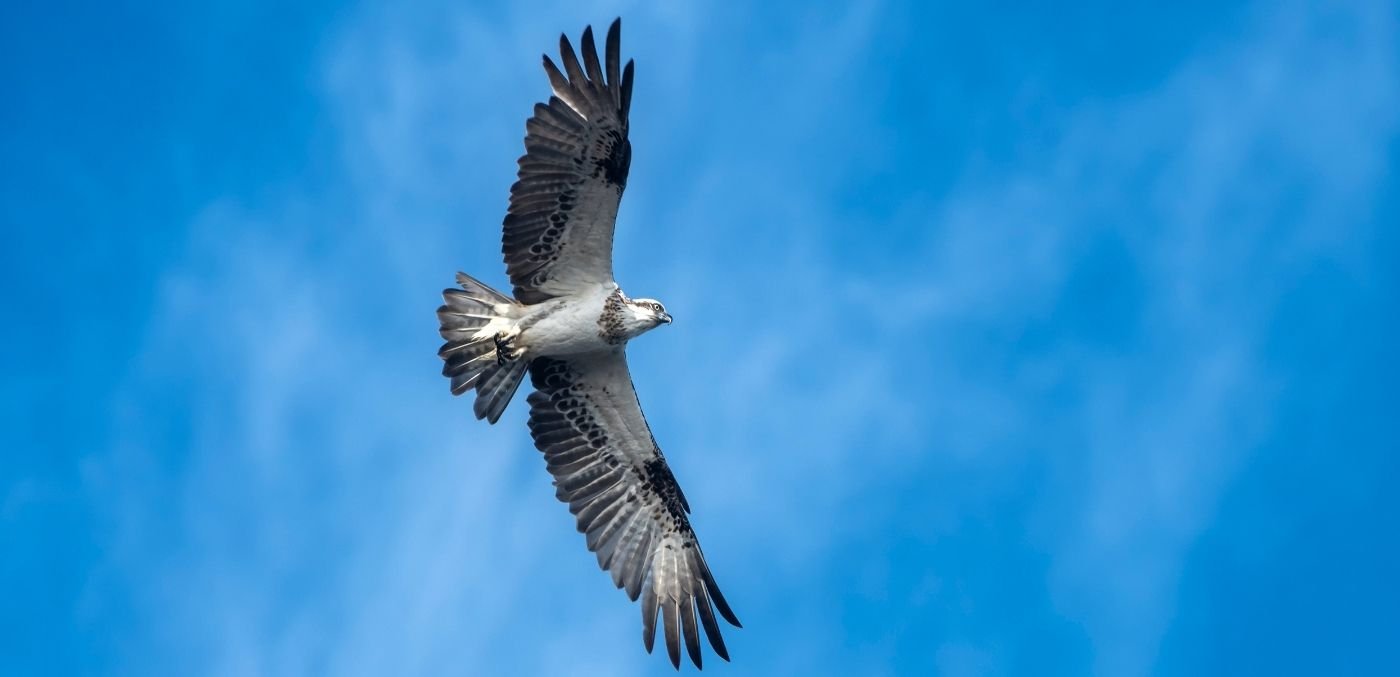
International hotels, lodges and resorts with birdwatching experiences
Thonga Beach Lodge in South Africa is hidden away within the coastal sands of the iSimangaliso Wetland Park, a UNESCO World Heritage Site. The lodge is set within a unique mosaic of dune forests, wetlands, freshwater lakes and Indian Ocean shoreline, and is home to more than 440 bird species. Guided birding is included in the stay.
Located on a private island in the middle of the Zambezi National Park in Zimbabwe, Tsowa Safari Island offers a birding spectacle with 450-plus recorded species in the area, and hosted birdwatching experiences.
Dawn Ranch Lodge in Guerneville, USA, is a 22-acre creative retreat nestled along the lower Russian River at the foothills of the redwood forest. Offering Birdwatching for Beginners, guests can explore Sonoma County’s unique microclimates with a leisurely walk along the scenic West County Regional Trail in Sebastopol to observe and identify songbirds, woodpeckers, raptors, and more.
The all-villa Raffles Bali boasts an oceanfront location in Jimbaran Bay and hosts a guided ‘Birds and Butterflies’ watching experience for inhouse guests, showcasing 25 bird species and 11 butterfly species that thrive within the 23-hectare landscape.
Singapore has 420 species of birds, and Raffles Sentosa Singapore is now hosting 90-minute guided walks through rainforest, guided by naturalst from The Untamed Paths, a wildlife-focused curator of experiences.
Rancho Pacifico is an adults-ony eco resort with luxury treetop villas that overlook the southern zone of Costa Rica’s tropical rainforest and the dramatic coastline of Bahía Ballena. Guests can view more than 200 bird species within walking distance of the hotel, and more on a guided tour.
Birdwatching checklist
- Binoculars – essential for spotting distant or small birds.
- Field guide or bird ID app – to identify species on the go.
- Notebook and pen – for recording sightings and notes.
- Camera with zoom lens – optional, for photography enthusiasts.
- Comfortable clothing – lightweight, breathable layers; neutral colors to blend with surroundings.
- Hat and sunglasses – for sun protection.
- Sturdy walking shoes or boots – suitable for trails and uneven terrain.
- Water bottle – stay hydrated during long walks.
- Snacks – lightweight, non-perishable options for energy.
- Insect repellent – especially in tropical or forested areas.
- Sunscreen – to protect exposed skin.
- Rain gear – waterproof jacket or poncho in case of wet weather.
- Backpack – to carry essentials comfortably.
- Spotting scope – optional, for observing distant or high-flying birds.
- First aid kit – for minor injuries or emergencies.
Keep reading:
Inside South Africa’s first luxury wheelchair-friendly safari lodge
15 five-star hotels and resorts with incredible animal encounters
28 incredible wildlife encounters around the world
This article is a Signature Luxury Travel & Style digital exclusive. Be the first to see more exclusive online content by subscribing to the enewslette below.






